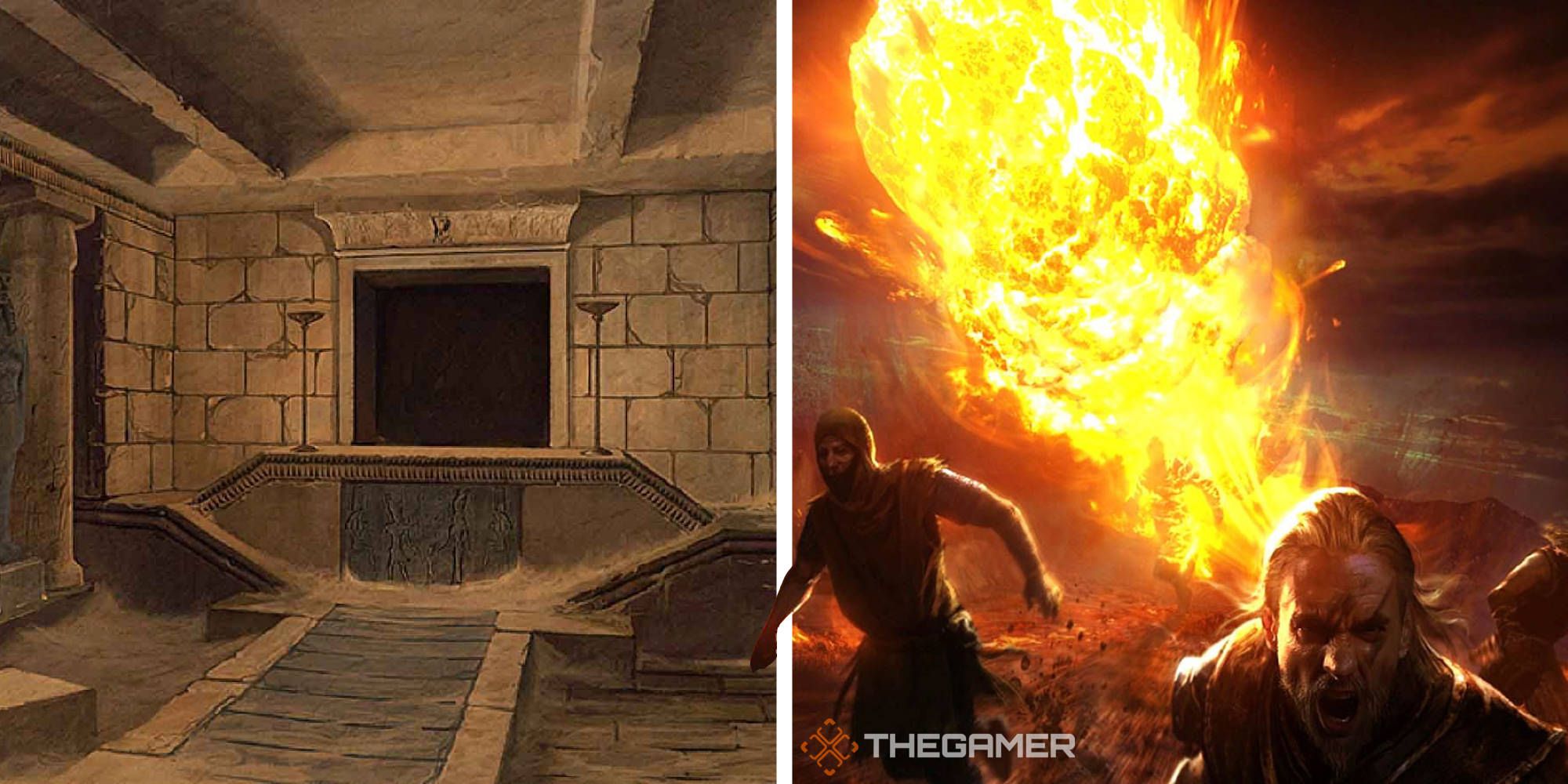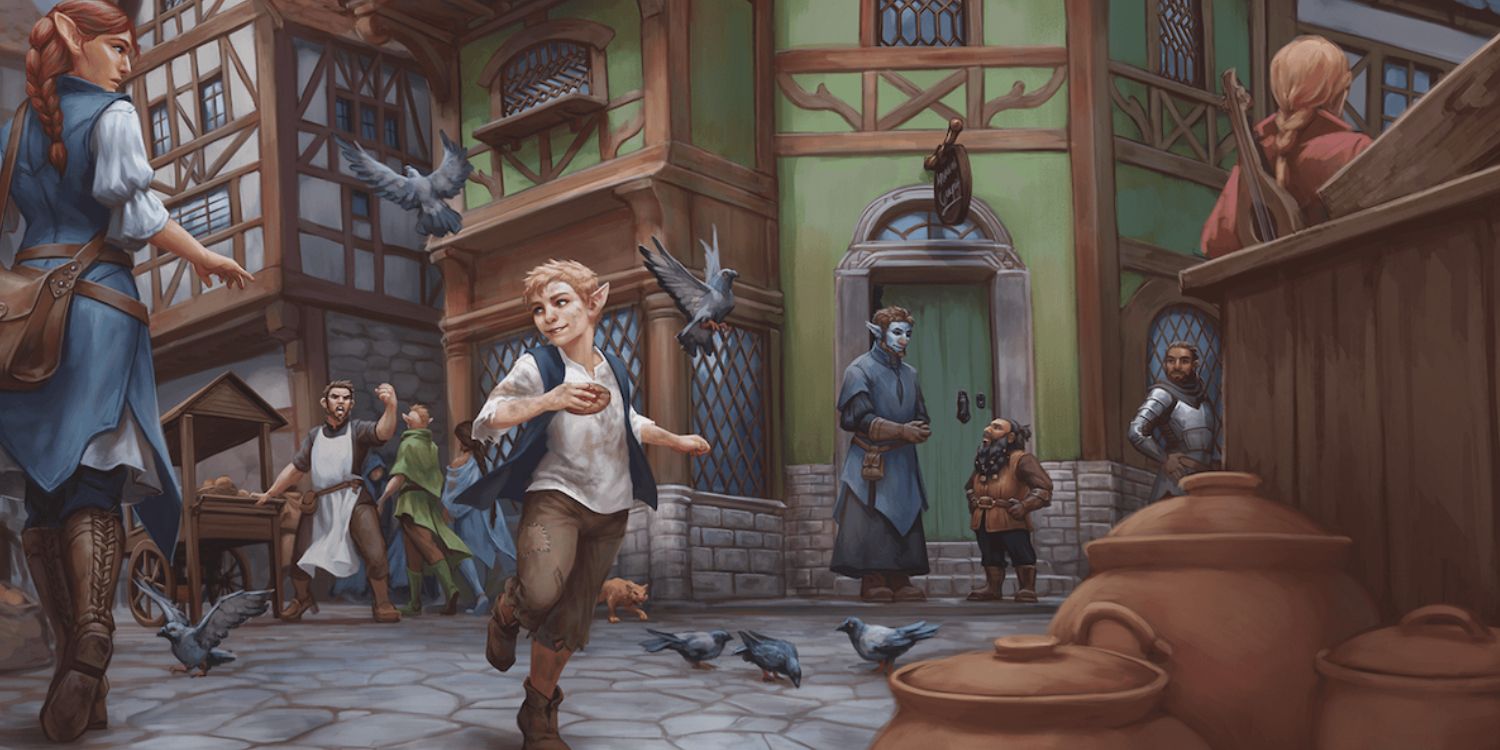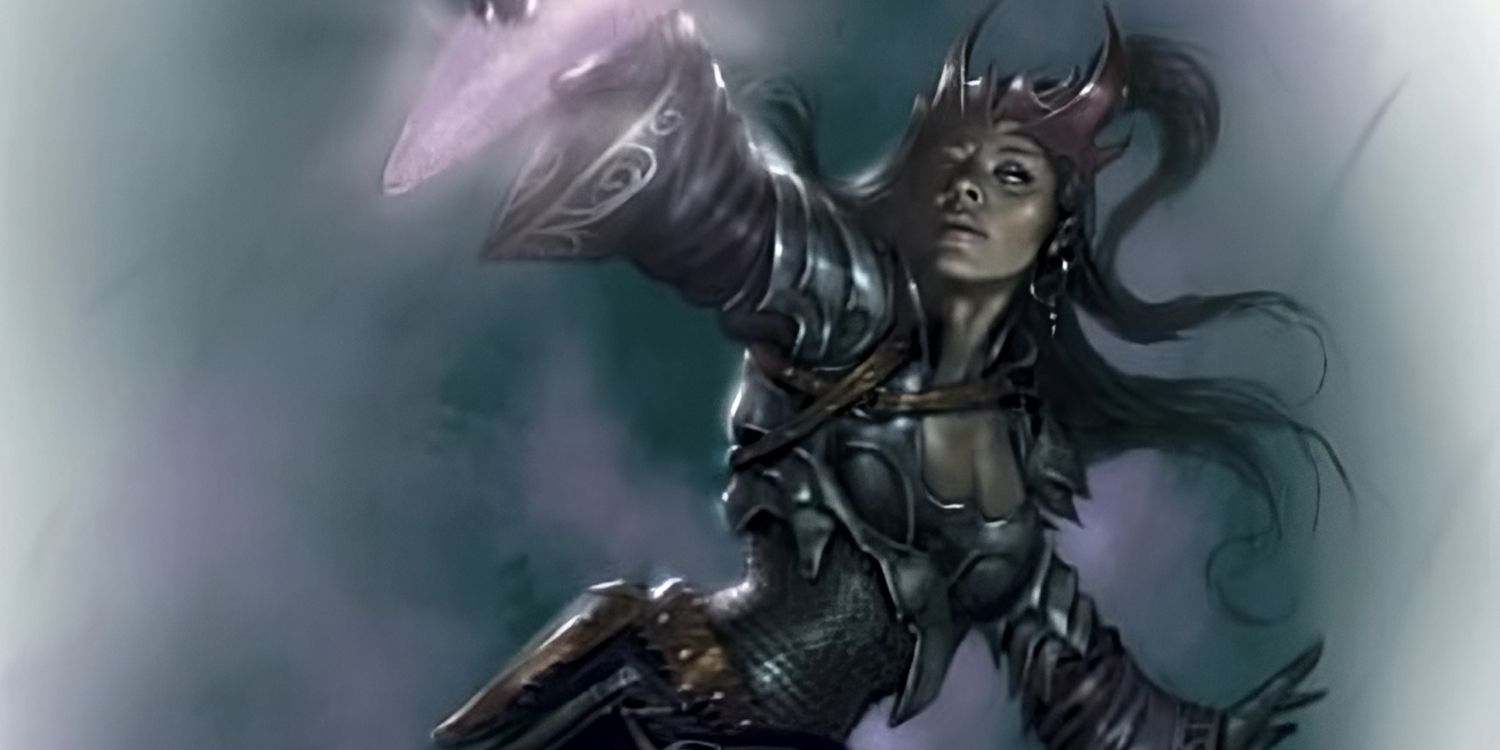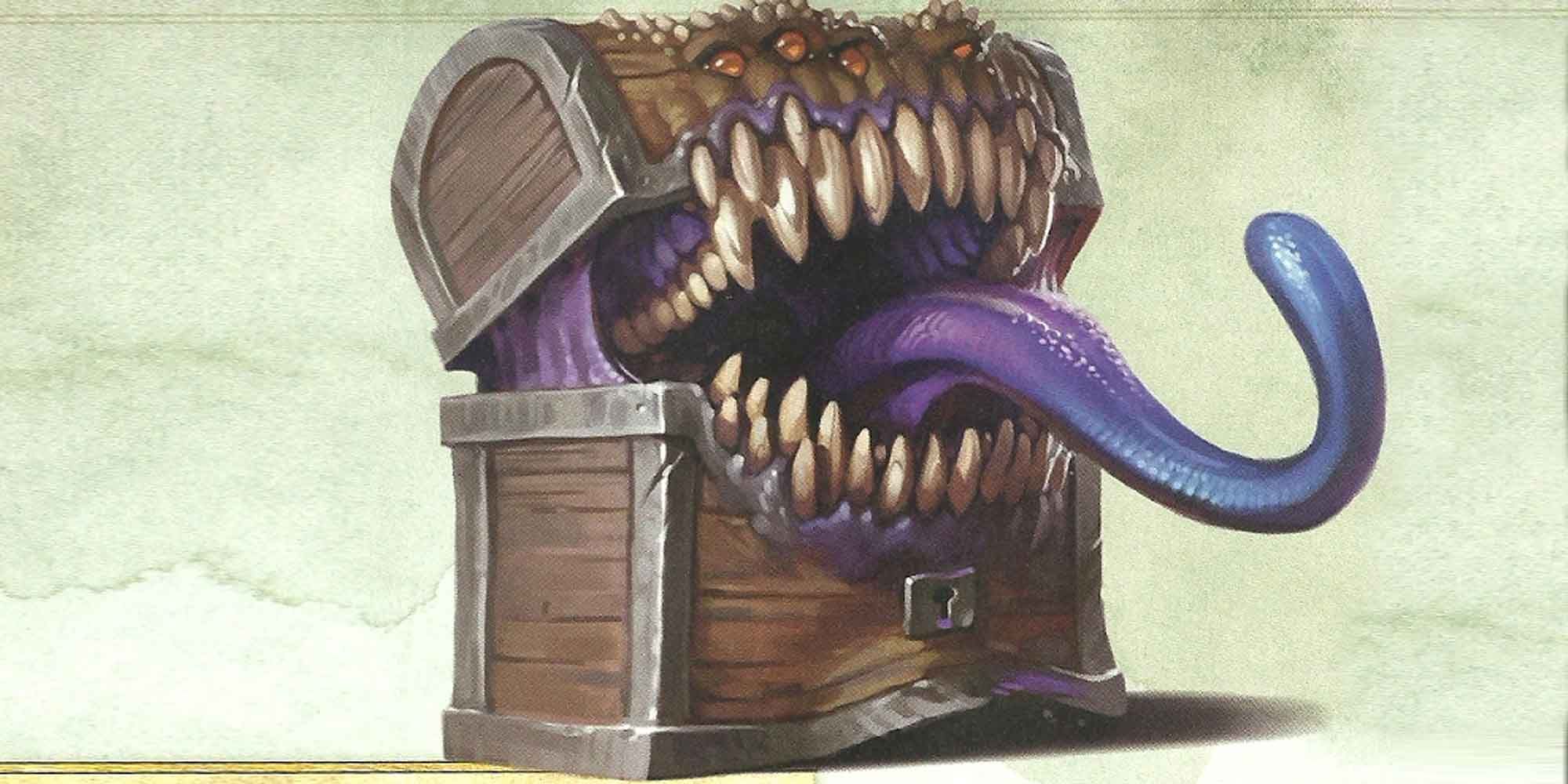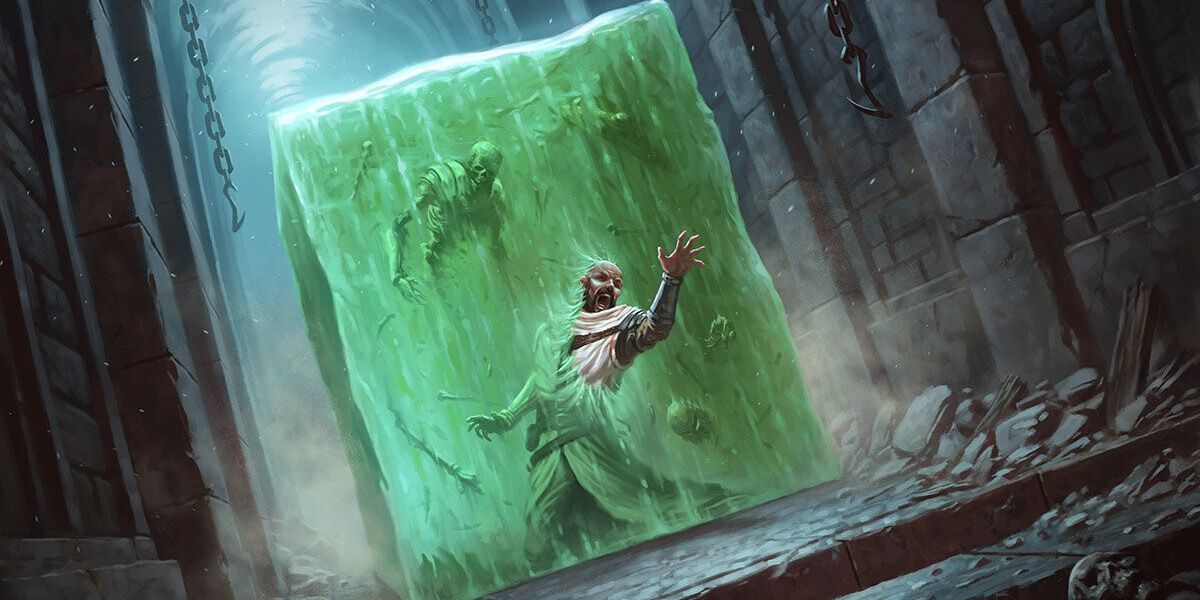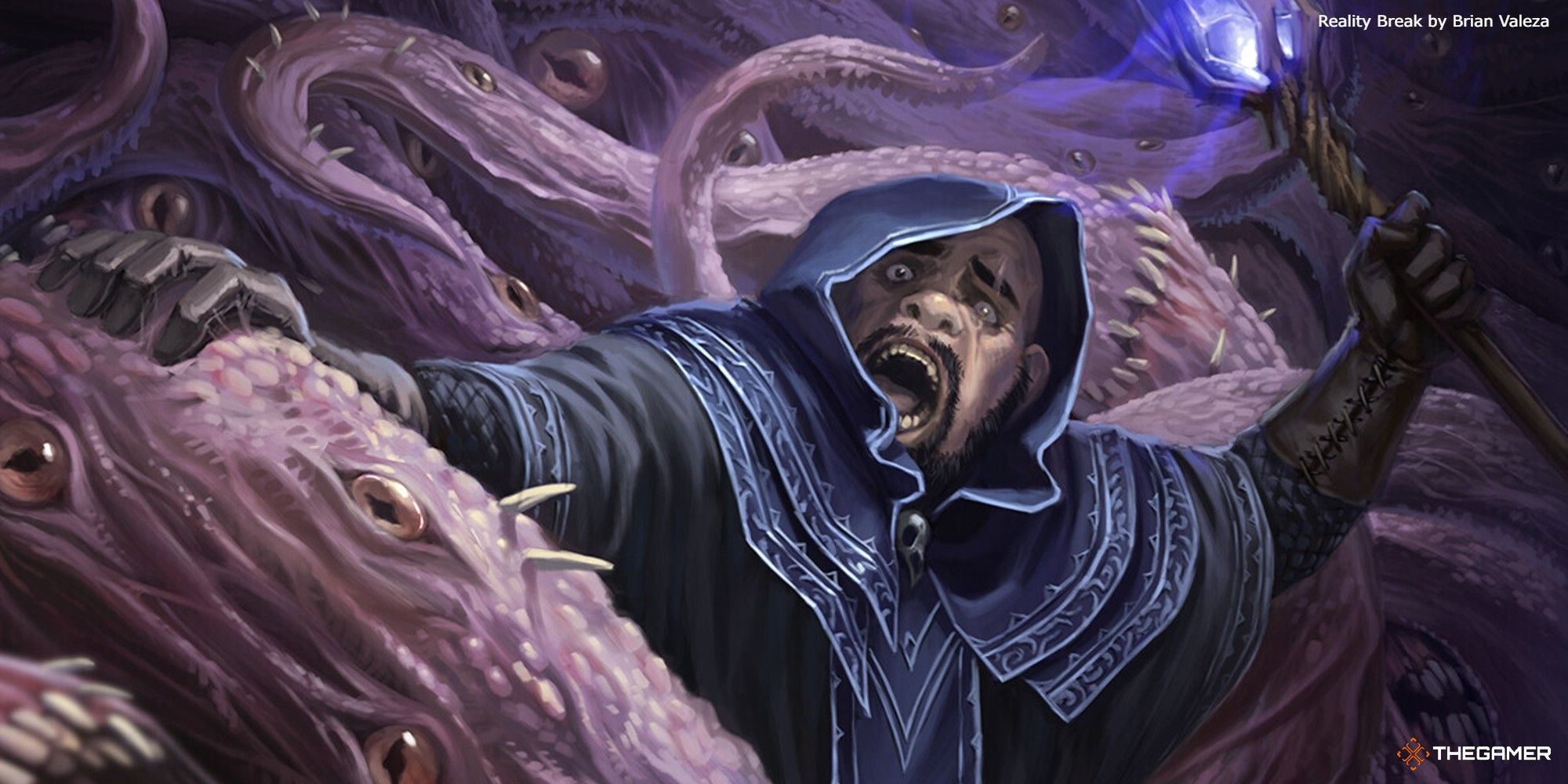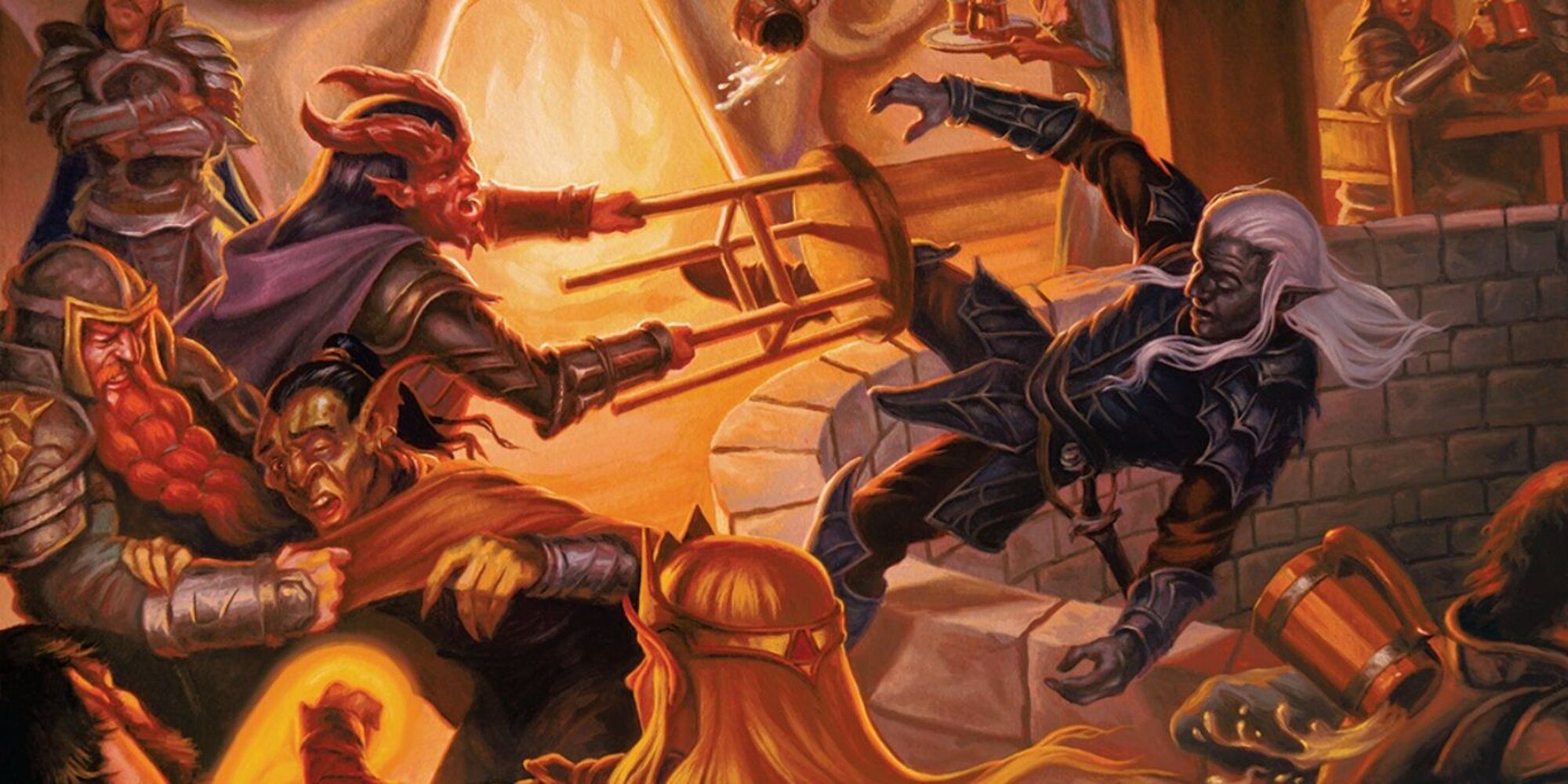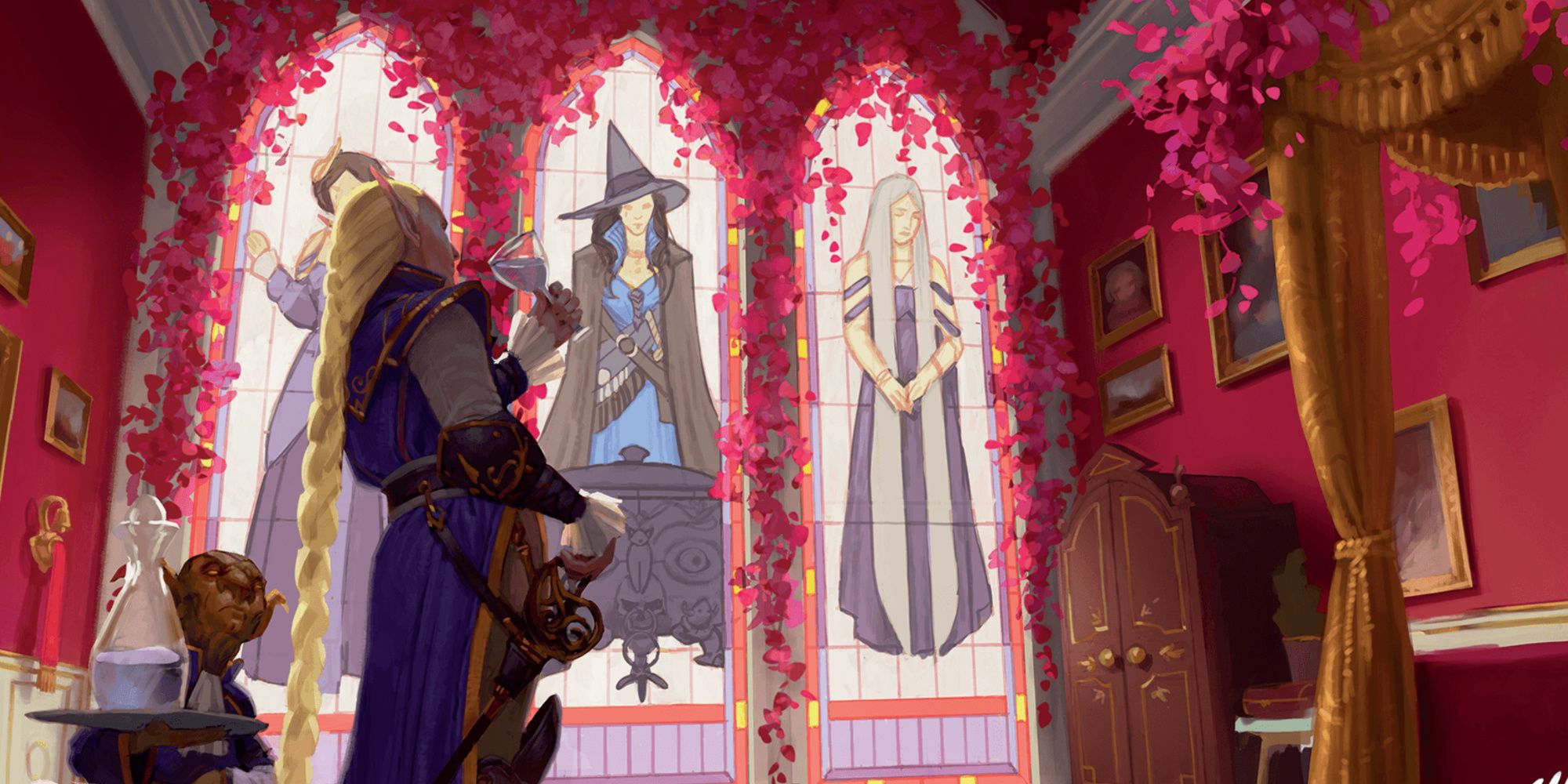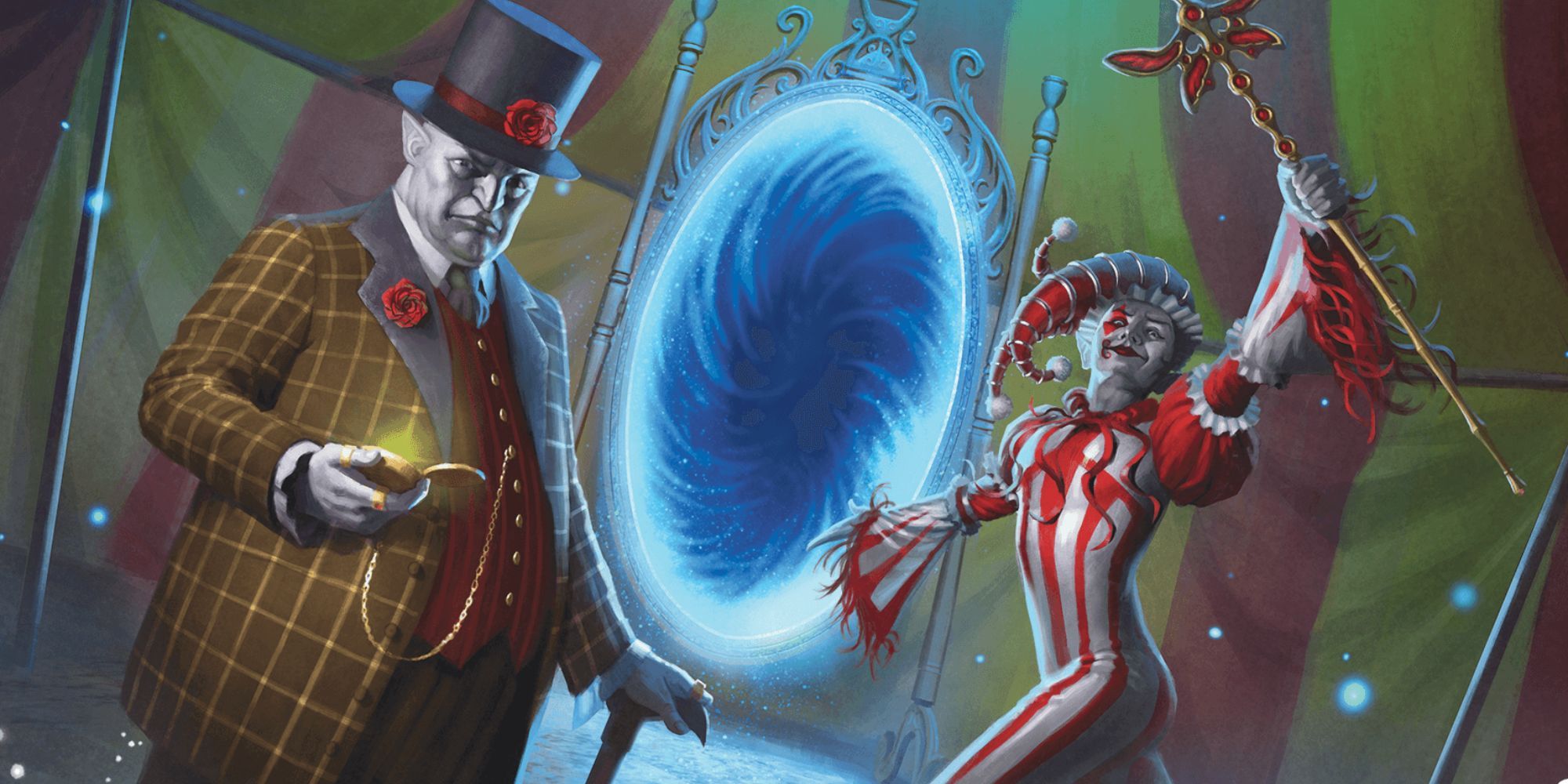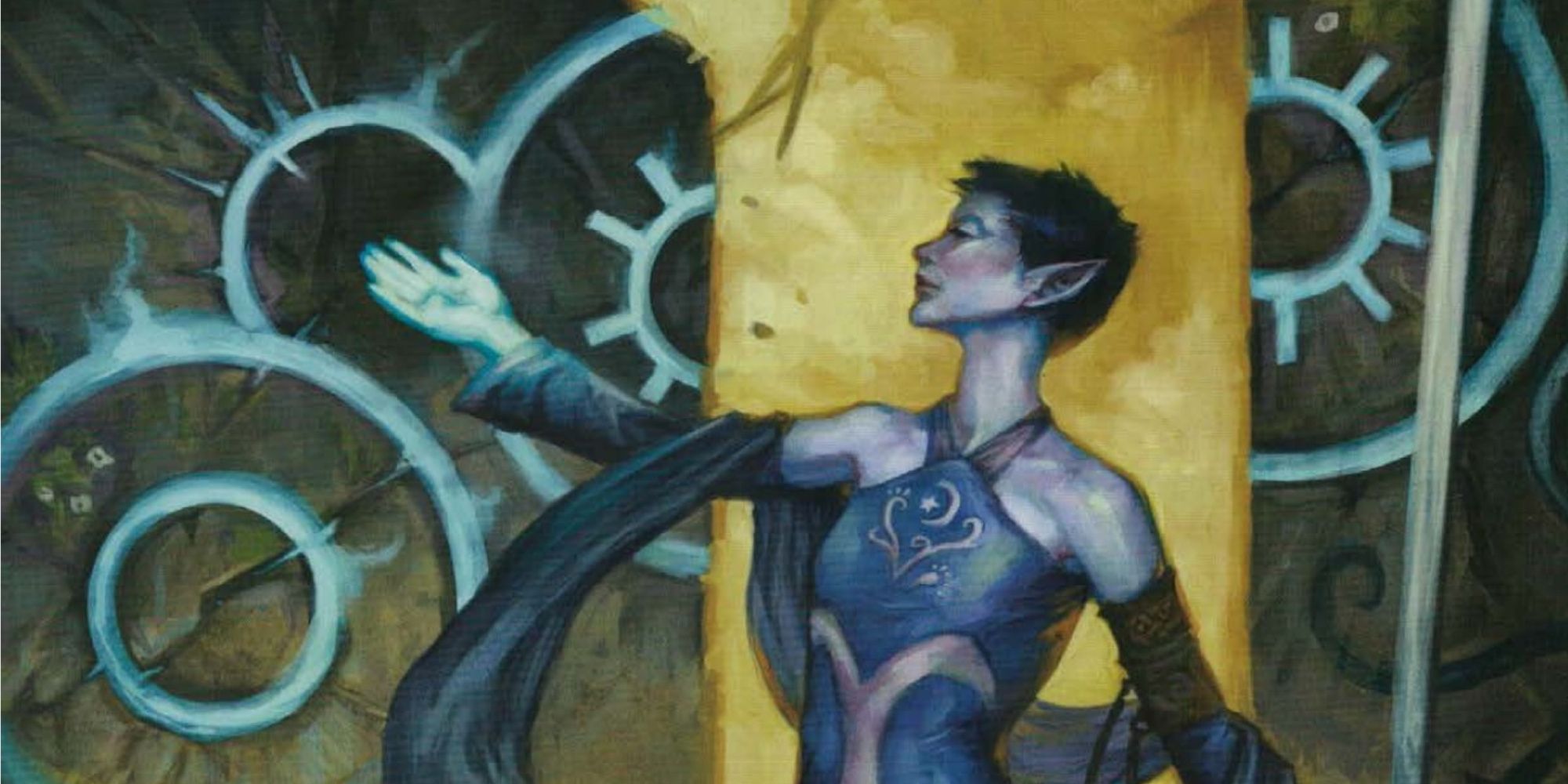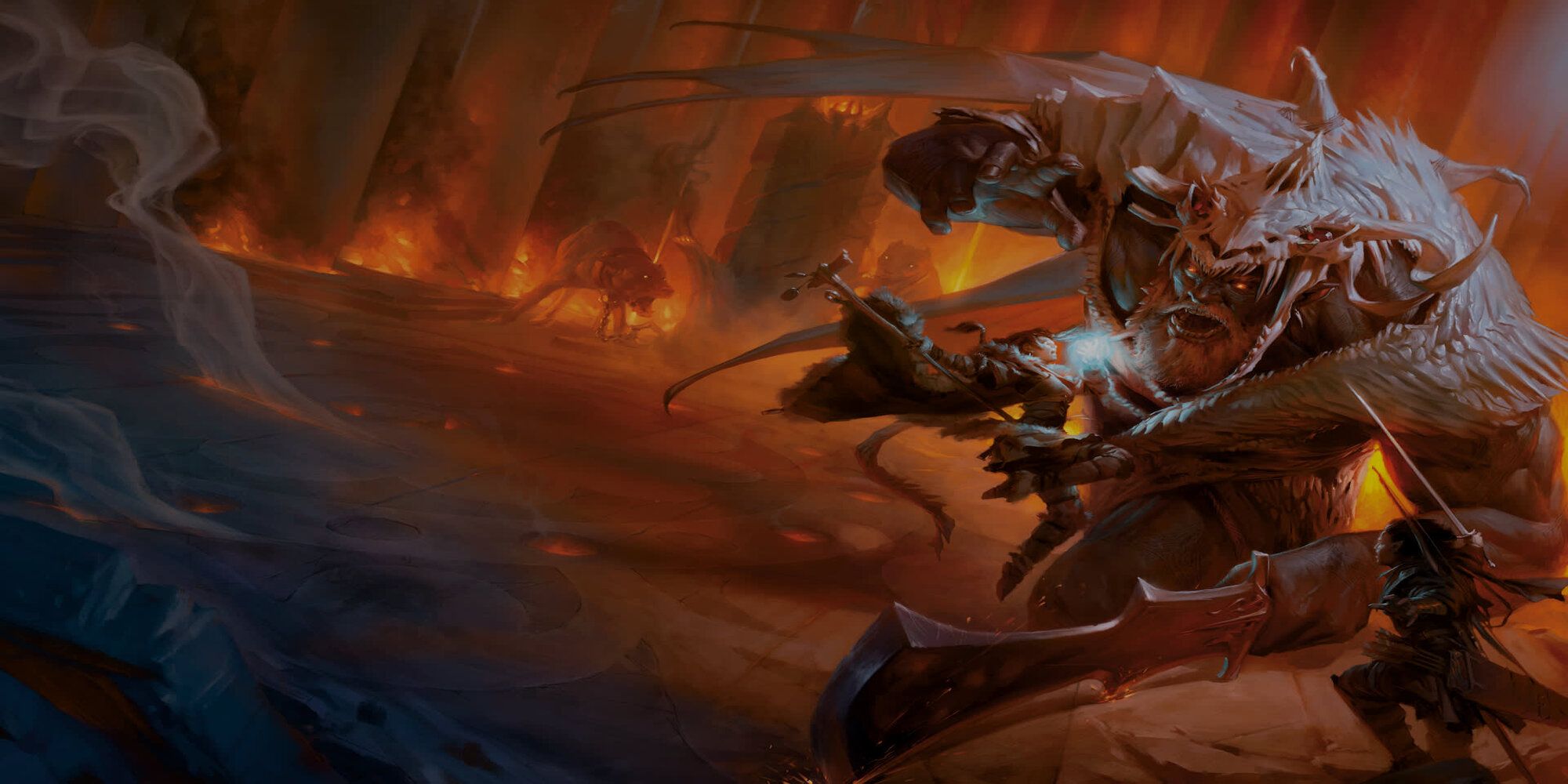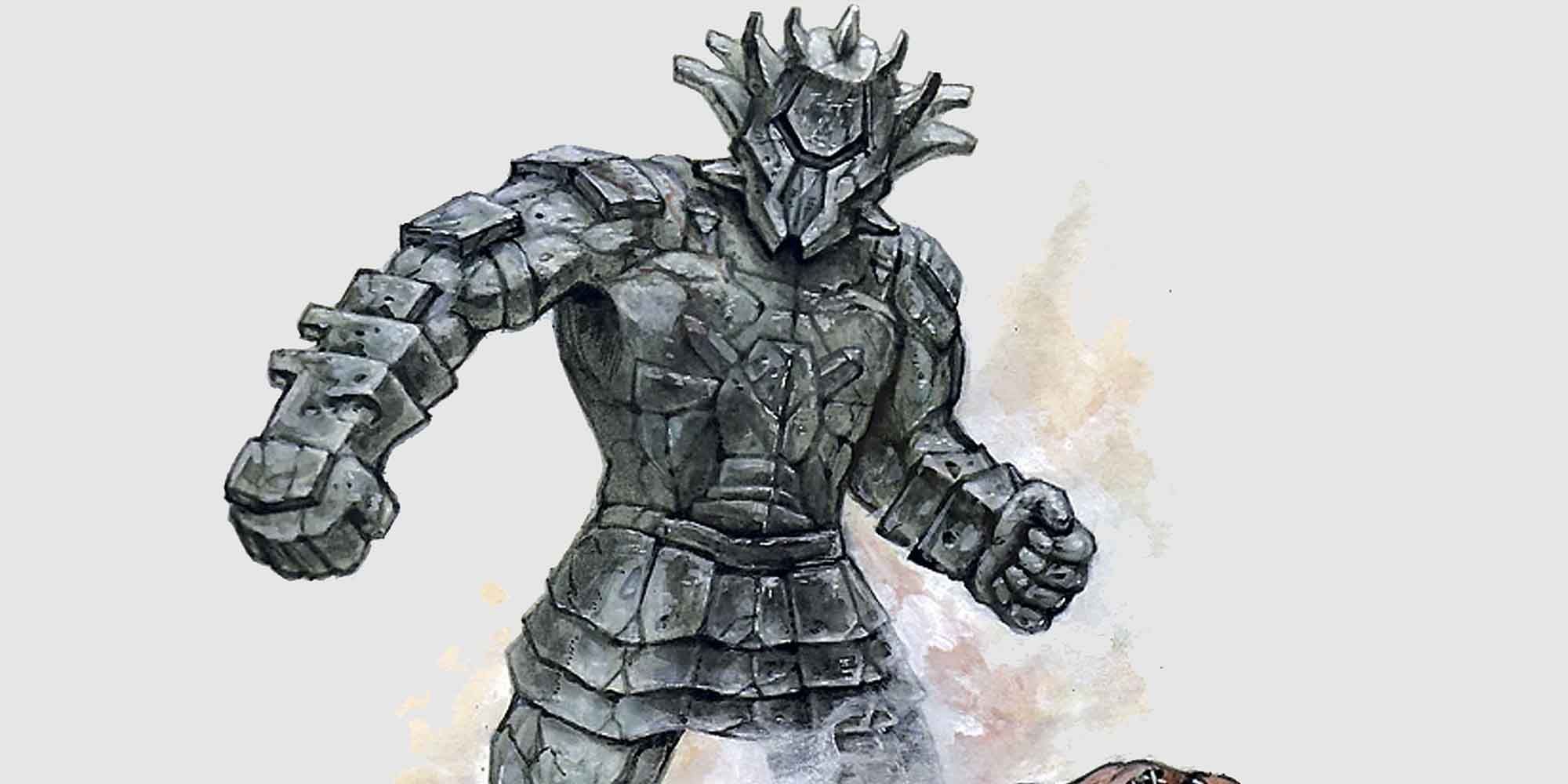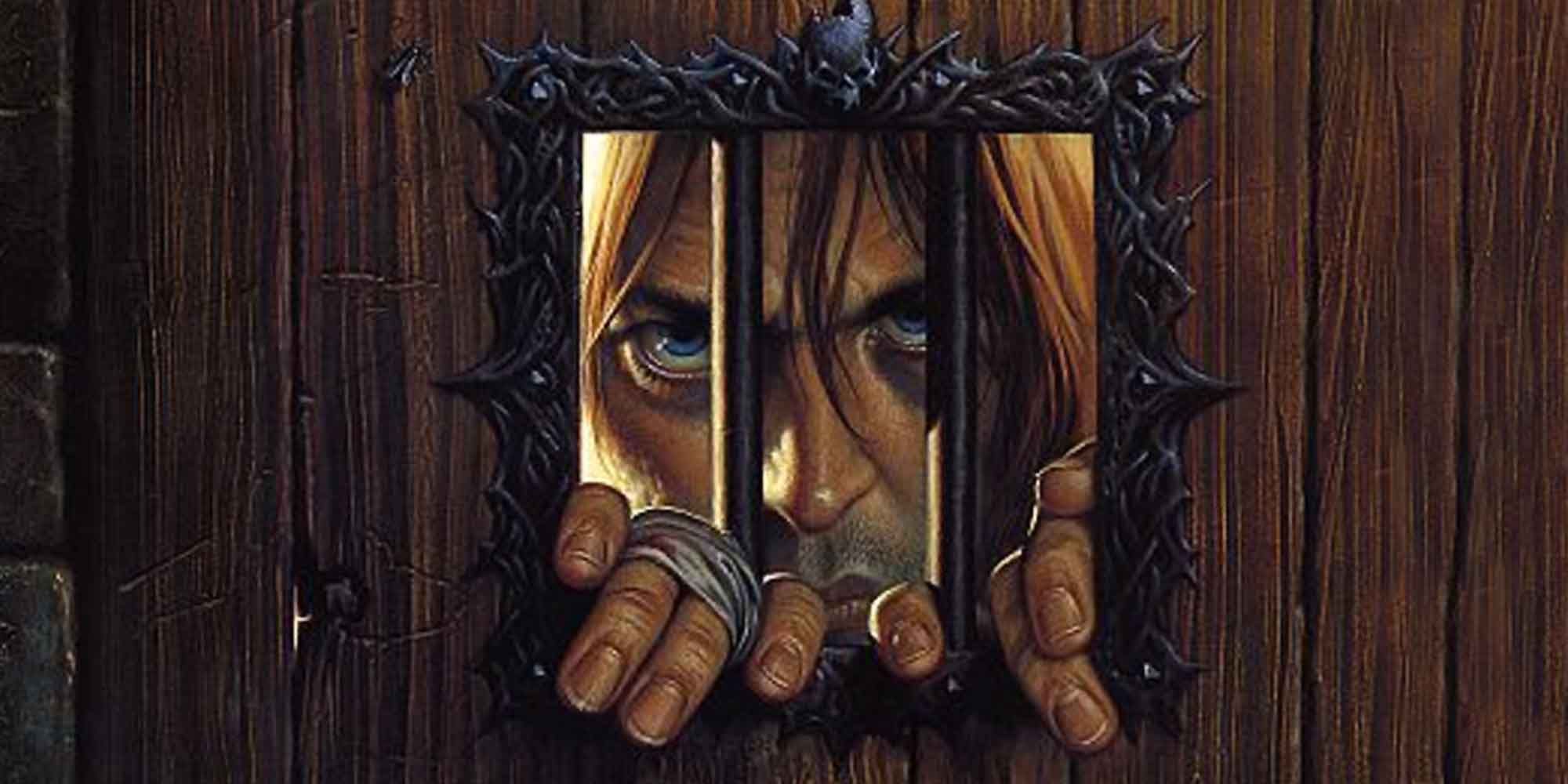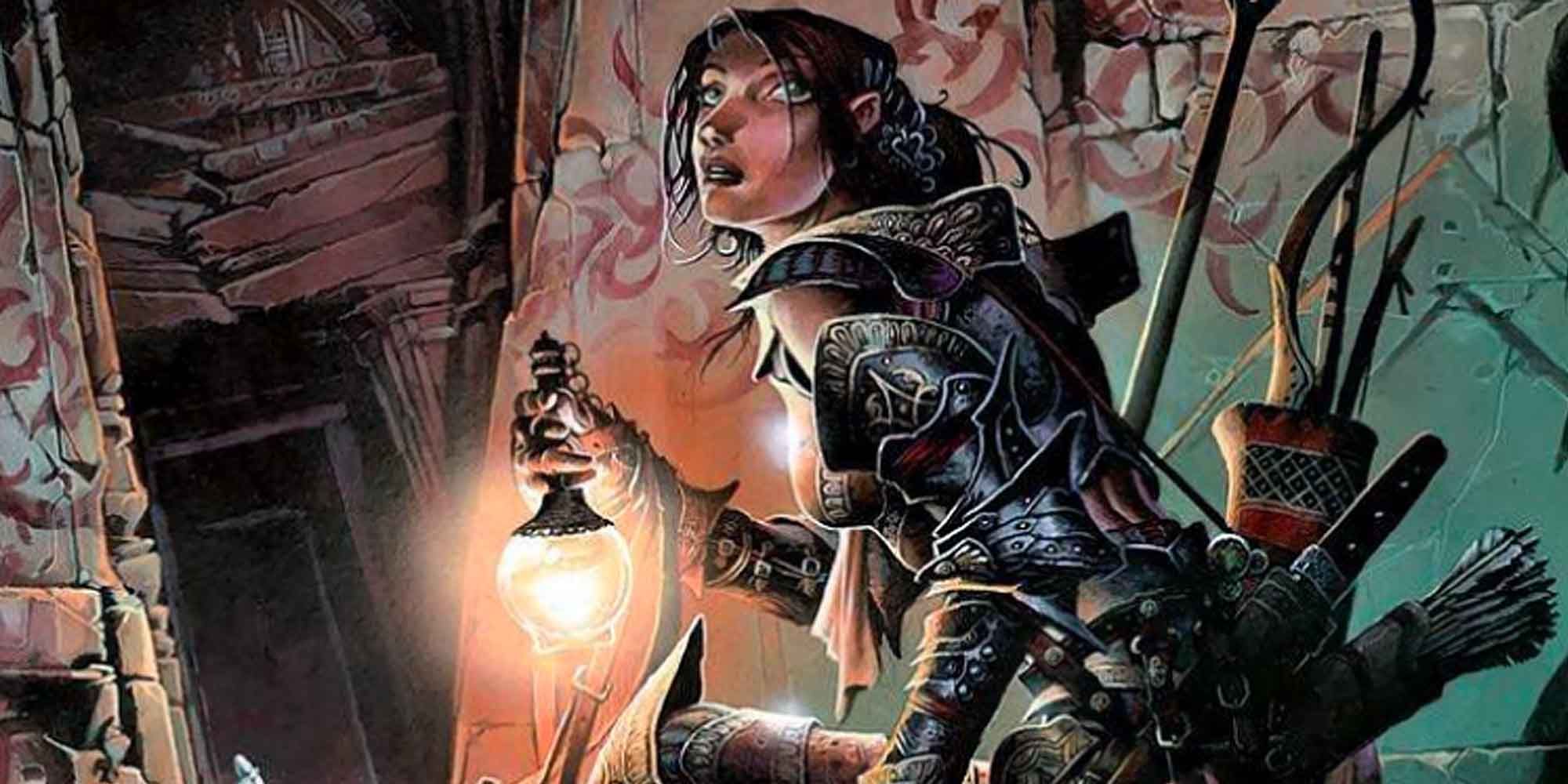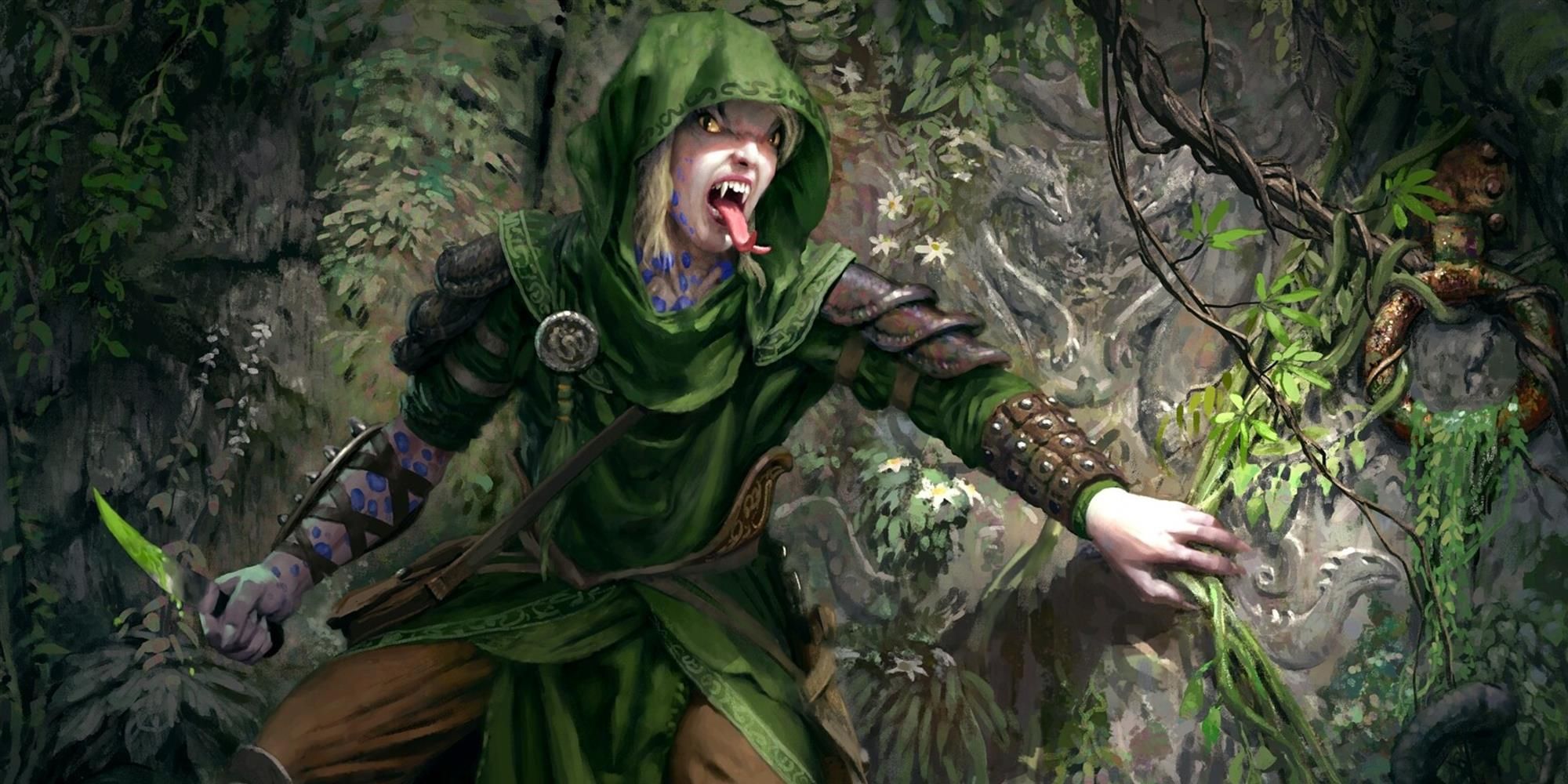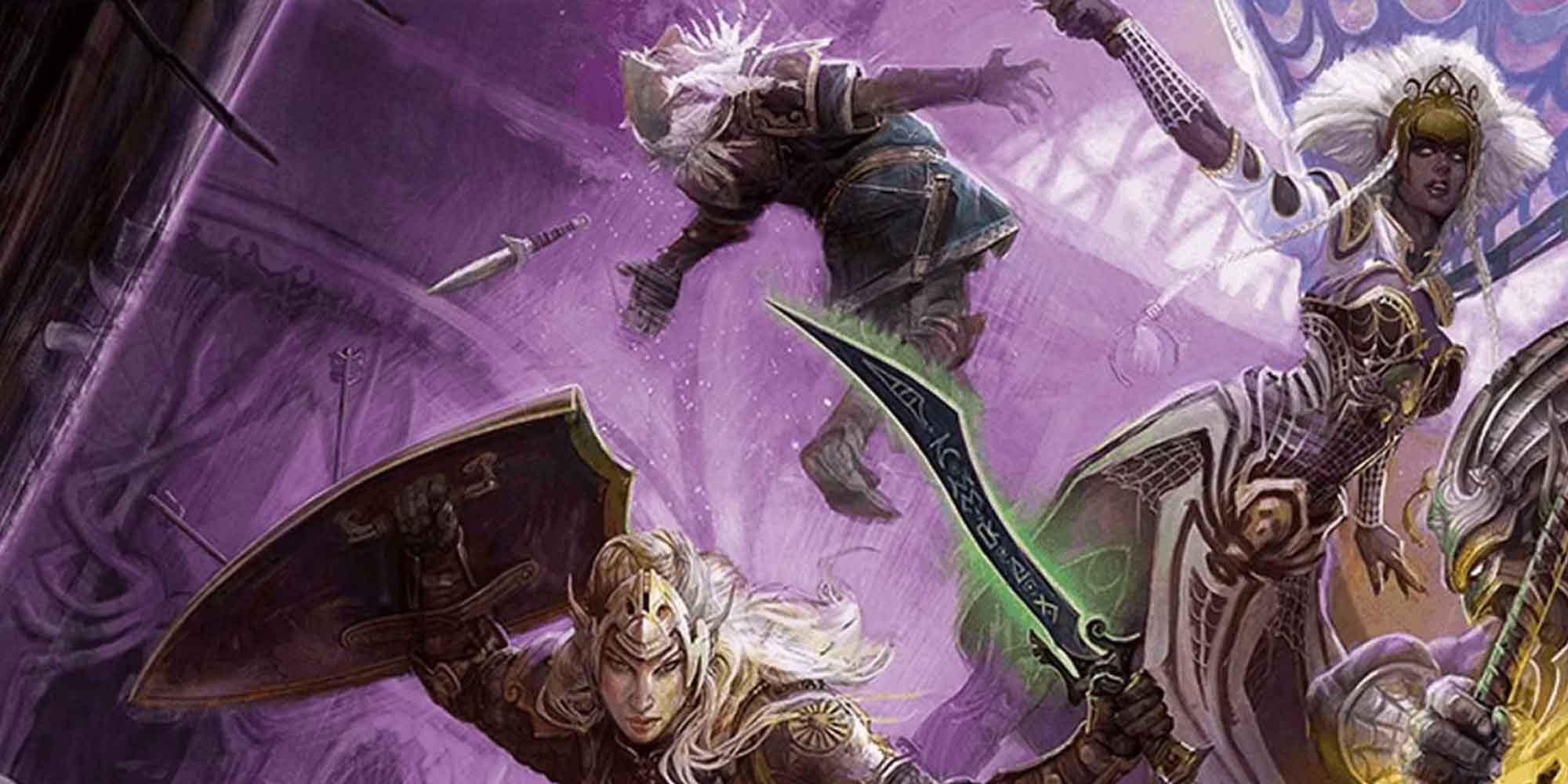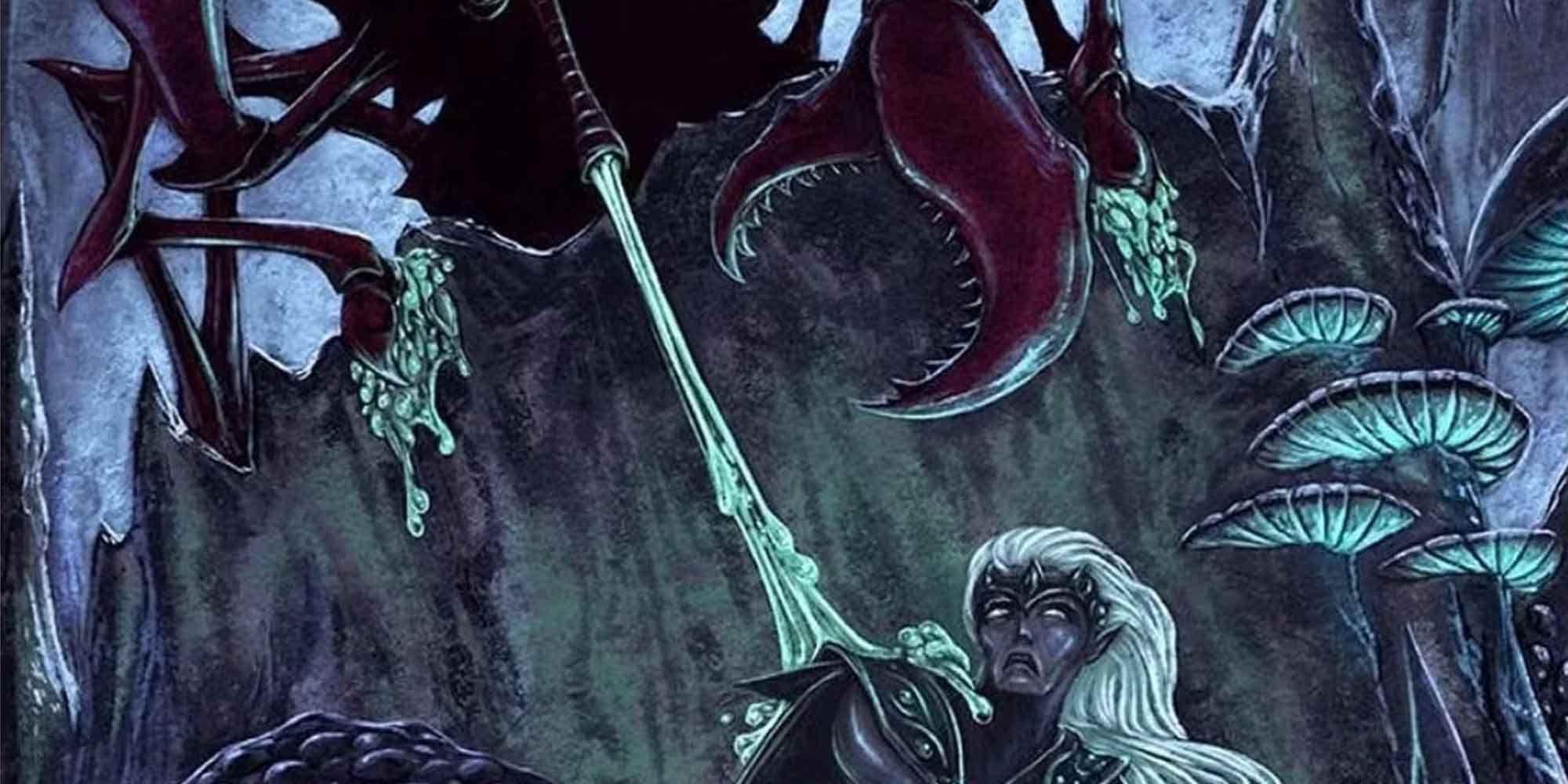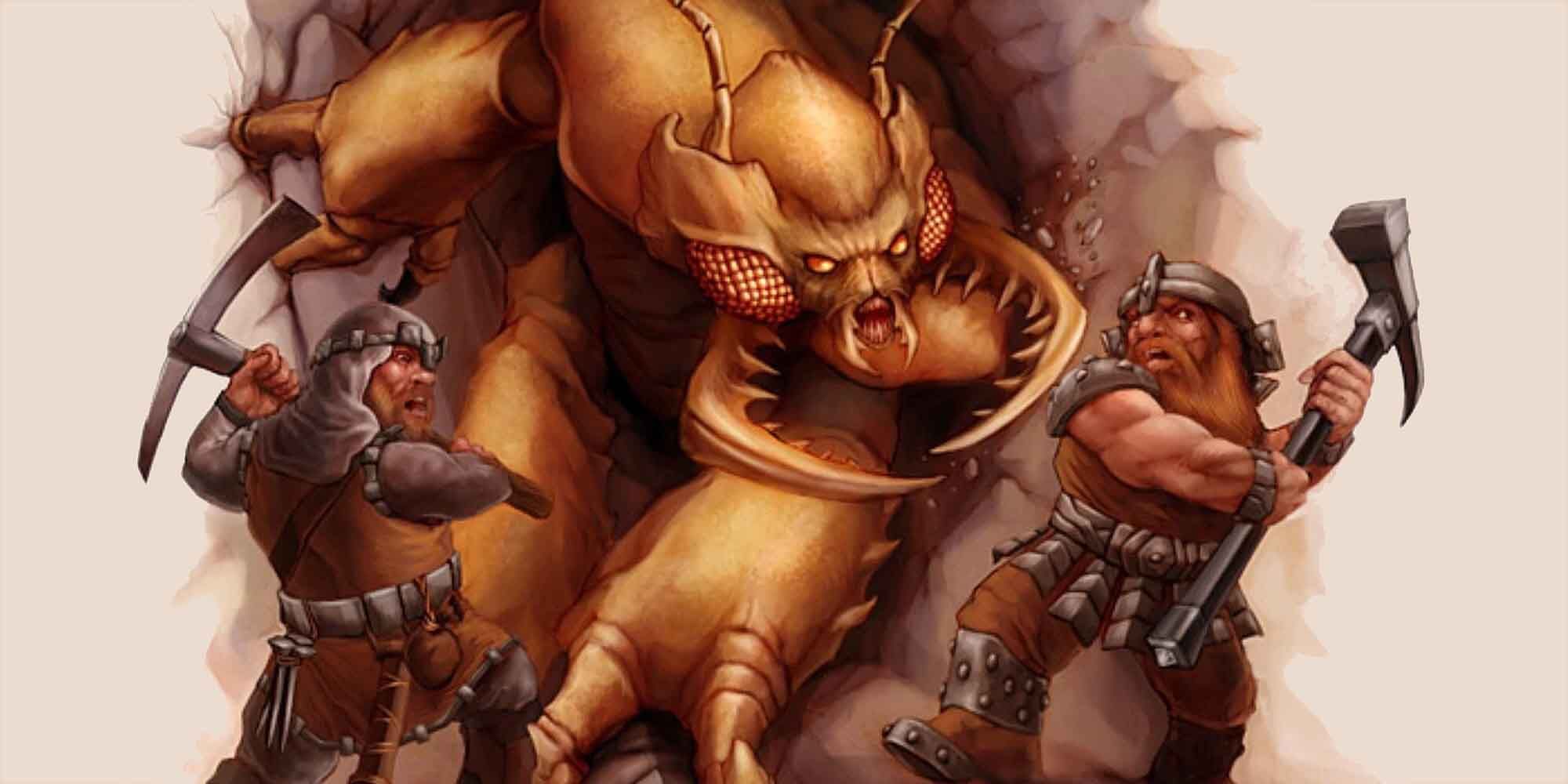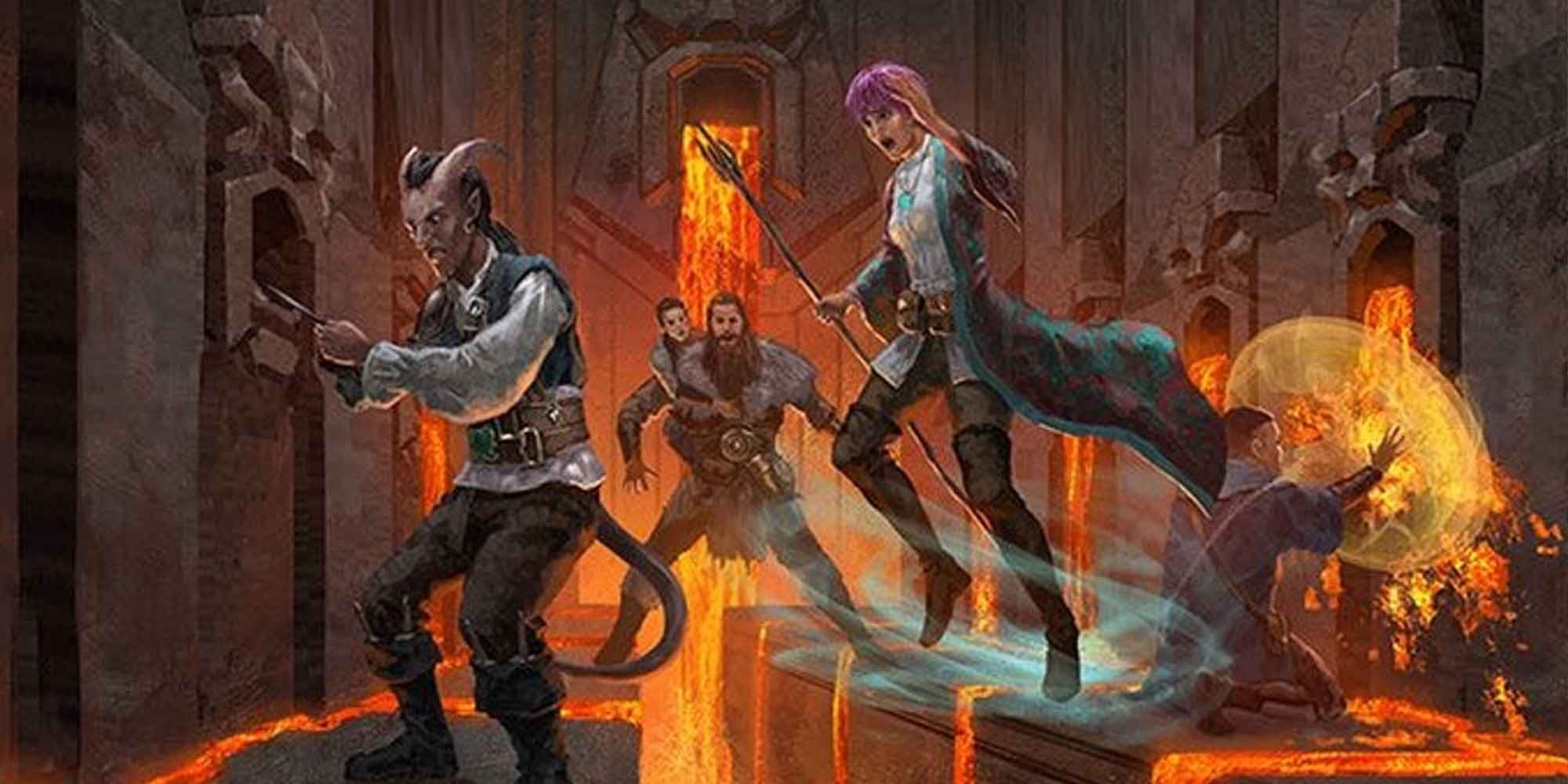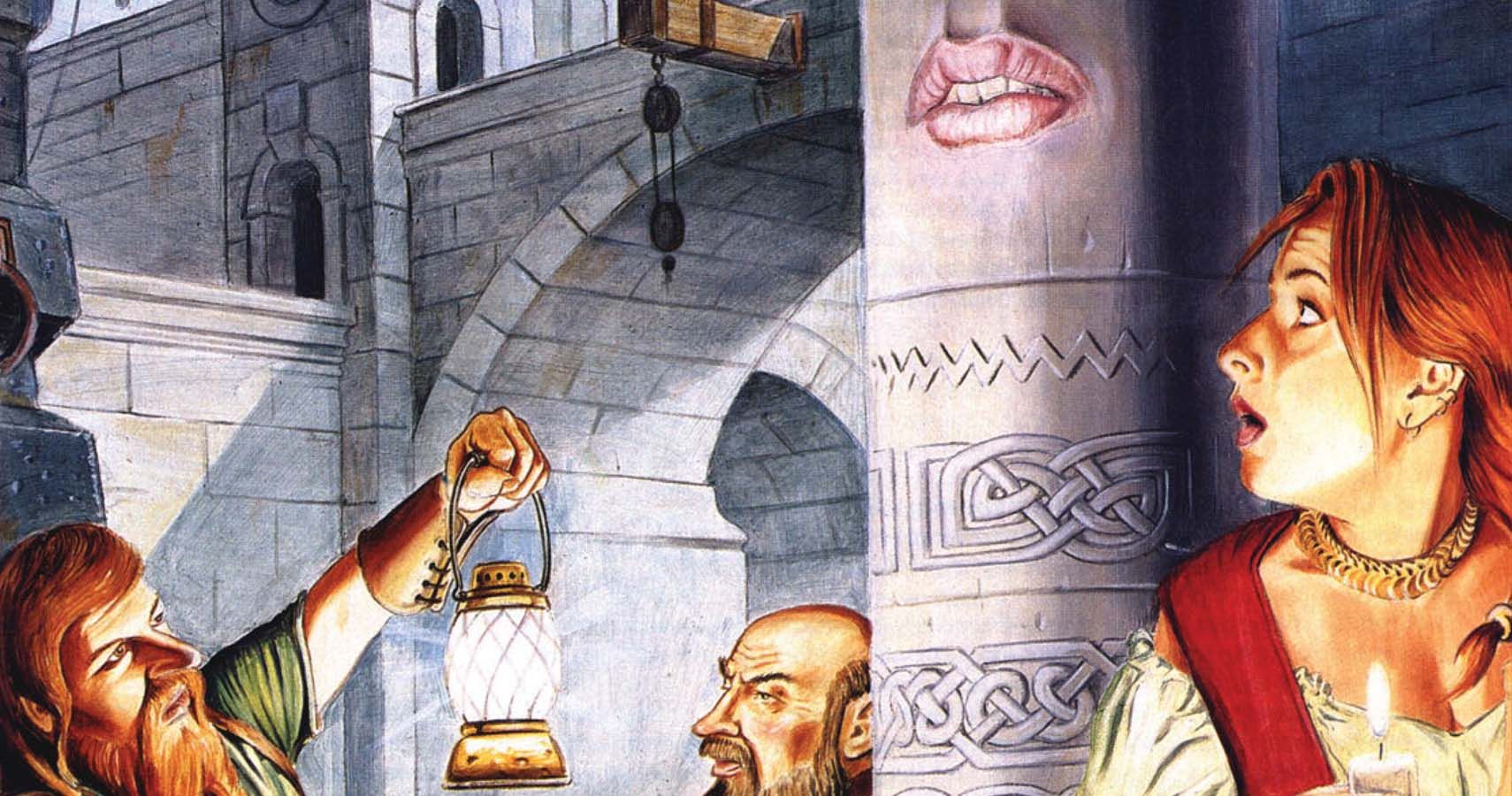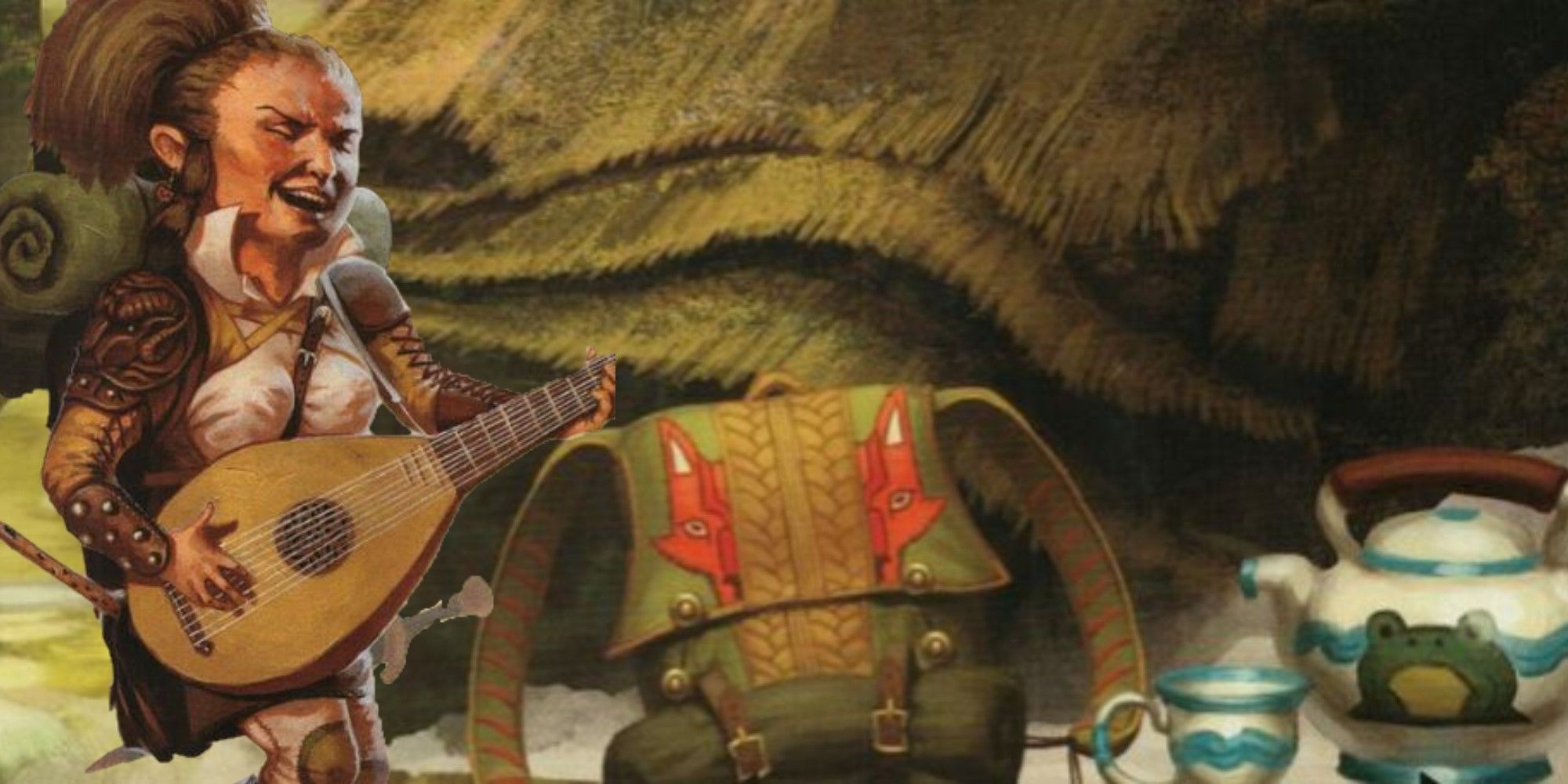Highlights
- Traps are a great way to keep the game exciting and prevent it from becoming monotonous, especially when players reach a level where nothing challenges them.
- Traps remind players of the mortality of their characters, and they should be tailored to the party's experience level, with fatal traps used sparingly, if at all.
- Using too many traps can make players overly cautious and disrupt the flow of the game, so they should be used strategically and in moderation.
Although the players might disagree, there are many reasons for a DM to use traps when playing Dungeons & Dragons. First, it is a great way to keep things lively. Sometimes an adventure can get monotonous, or perhaps it wasn’t as challenging as the DM originally thought. A trap suddenly springing on the party will certainly get their attention and make the players more alert.
Sometimes players get their characters to a level where they’ve fought everything, and nothing seems to give them too much of a challenge. Traps are a great way of reminding the players of the mortality of their characters. You should keep in mind the three basic trap types of annoying/diverting, damaging/debilitating, and fatal. Fatal traps should be kept to an absolute minimum though – if they are used at all.
Updated on August 9, 2023, by Jeff Drake: There are no shortages in the types of traps available for DMs to use against a party of unsuspecting players. The original traps featured on this list were just scratching the surface of what's possible. In an effort to give DMs more options, this list has been updated with five additional traps for you to use to remind players that their characters are far from immortal. Not all traps are pits in the floor or snares that leave the victim dangling. Sometimes traps are more difficult to spot, like the False Adventure entry. Here, you'll find not only contain great traps to use, but also clever ways to insert them into the adventure.
Keep in mind that using too many traps in your campaigns will make players exceedingly wary, which can really ruin the flow of a D&D session.
20 Call Of Distress
The party is navigating through a dungeon, or forest, or city (location isn't important), when they hear cries of help from someone. When they investigate they discover a person bound to the wall with heavy chains. Perhaps it is a small child; though, this might make it a more obvious trap.
At this point they discover the call of distress was meant to lure the party into an ambush. This trap can be tailored to fit the party's experience level. A low level party might be ambushed by goblins or orcs. A high level party might discover the small child calling for help is actually a powerful demon or devil.
19 Snares
This ancient form of trap is pretty common, and capable of being employed by nearly every intelligent creature in D&D. There are two basic types of snares. The first is simply a length of rope, or vines, that are placed in a way to ensnare the victim. These types of snares are meant to slow or stop the victim's movement. A bear trap is another form of this type of snare.
Another type of snare uses a counterweight to move the ensnared victim. This could simply leave them dangling in the air, usually upside down. This type of snare could be used to pull the victim to an even deadlier trap.
18 Mimic
The mimic has become famous, so much so that one made a brief cameo in Dungeons & Dragons: Honor Among Thieves. These creatures normally resemble treasure chests, but are in fact living beings with a huge mouth full of sharp teeth.
These are perfect traps to employ when party members have grown complacent due to gaining better gear and higher level abilities and spells. At that point, a mimic isn't a serious threat, but it will almost certainly bring a little levity to the night's gaming session. If you want to make this a more serious encounter, you should be aware there are house-sized mimics (that resemble a house).
17 Gelatinous Cube
This is another famous D&D creature that appeared in Honor Among Thieves. The gelatinous cube (or g-cube) is a translucent cube of ooze large enough to hold several human-sized creatures within. Once engulfed by a g-cube, the victim begins taking a significant amount of acid damage every round.
These creatures can be placed just about anywhere in a dungeon. A particularly nasty location is in the floor of a dark dungeon, so unsuspecting adventurers will walk right into the trap. These creatures can also move, making it even more dangerous if it traps the party in a dead-end passage.
16 The False Adventure
This is a particularly devious trap, as it's not the kind that can be detected in the normal means. The party is given a quest to perform; however, the quest is from a source that wishes the party harm. Maybe the party has earned a reputation that makes them a threat to someone, or something.
If the party lets a powerful enemy escape at some point in the past, this is a good opportunity to reintroduce that NPC. The adventure is actually meant to lure the party into an unfavorable situation. Again, this is not a trap that can be discovered with a simple roll of the dice — making it perhaps the most dangerous trap of all.
15 The Trusty Pit Trap
The best part about pit traps is that they are highly customizable for a DM. The trap could simply open to a hole that has walls that are difficult to climb, or it could open to a short fall onto a bed of spikes — a short fall into a gelatinous cube is also an idea.
The trap could also drop the party into a tunnel system that deposits the party at a place of the DM’s choosing. The trigger for a pit trap could also be nearly anything, but, if the trigger is magical, the players might spot it more easily via detect magic or a similar spell. There may be no trigger; the top of the pit could be illusionary.
14 The Duplicate Mirror
This is triggered by looking into a magic mirror that creates a duplicate of whoever looks into it — a perfect recreation of the original. The original’s items are also duplicated, but not magical. The duplicate immediately springs out of the mirror and attacks the character.
This trap could also have a delay of a few days or weeks, or the duplicate might be instantly teleported elsewhere upon its creation. This duplicate has the opposite alignment of the original and seeks to destroy the original and his/her friends. The duplicate might also gather a party of adventurers of their own to help in this quest.
13 Teleport Doorway
This devious trap is triggered if someone passes through the trapped doorway without the proper 'key.' The key could be anything — a feather, or copper, or a diamond worth at least 50 gold pieces. When passing through the doorway, a character is teleported to a specially prepared area.
This might be a holding cell, which, hours later, opens into a gladiatorial arena in which the party must now find themselves fighting. It could also simply teleport the character to the entrance of the dungeon — however, you risk a revolt among the players if this is placed too far into the dungeon.
12 Glyph Of Warding And Fire Trap Spells
These two spells are great trap spells for DMs to use — mainly because they can be used on just about anything. Glyphs of Warding are a little more serious due to the high potential damage output (5d6) and the fact the damage type can be selected by the caster. Save this type of trap for higher-level campaigns, as this spell has a good chance of killing lower-level party members.
Fire Trap is a spell from earlier editions that hasn't made its way into Fifth Edition yet. It does far less damage (1d4 +1 per level) than the Glyph of Warding spell and must be cast upon an object that opens — like a door, book, or chest. Fire Traps are more difficult to detect than Glyphs since glyphs placed upon an object can be seen with a successful intelligence check.
11 Web Of Flames
This trap can be tailored to the average level or hit point average of the party. The trigger could once again be almost anything; a pressure plate on the floor, a lever, or a magical barrier work fine. When the trap is triggered the area is filled with web spells – more than one web spell will increase the chances of members of the party being caught.
Then a fireball is cast into the webbed area. Those caught within the webs not only take the fireball damage but the extra damage from the burning webs as well. The fireball does not have to be cast immediately. If you're a generous DM, you might consider giving the party a minute to escape.
10 The Statues Are Alive
Place a few statues in a room; entrance halls are a logical location. They can be humanoid, but can also be an animal shape — like a wolf or a snake. The trigger for the statues animating, or golems if you want to really challenge the party, could be if weapons are drawn in the room or if the party is not carrying a 'key' of some kind.
The trigger might also be a command word, allowing the possibility of the party being able to control the statues/golems. If these statues/golems are in a treasure room, they might activate if anything in the room is removed.
9 The Compactor
This trap is a particularly devious dungeon trap. The party enters a room and triggers the trap — which can be almost anything — and the doors close. Suddenly, the ceiling starts moving down towards the floor. Alternatively, the walls could begin moving inwards like the trash compactor in Star Wars Episode 4.
This trap is great due to its customization. You could have the ceiling move fast or slow depending on how much time you wish to give players to find a way out or stop the ceiling from crushing them. This can also be a good way to introduce an NPC who comes along to save the party by turning the trap off from outside the room.
8 Greased Slide
This trap is best placed in a narrow hallway. Place something of value, or apparent value, at the end of the hallway. When the party gets halfway down the hallway, the floor tilts downward on one end, and grease begins covering the floor.
A good trigger for this trap would be a pressure plate or tripwire. The grease may either be magically created, or it can be fed into the room by tubes that are opened when the room tilts. The victims slide down the hallway toward whatever you wish to have waiting. Spinning blades are one possibility — but again, a gelatinous cube always livens up the night.
7 Poison Needles
Nearly every player who runs a thief gets complacent at some point. Their chance at opening locks eventually gets so good that failure is not likely. This leads to hubris. If you want to punish the party's thief for this hubris, you can use the age-old, time-tested, spring-loaded poison needle trap.
These can be placed inside the lock itself, making them more difficult to detect. The poison can be adjusted as well — it could be a minor poison that causes minimal damage. It could also be a particularly nasty poison that causes a debilitating condition. Alternatively, instead of a single needle, they could spray out like a blast from a shotgun, making the whole party potentially pay the price for the thief's hubris.
6 Fun With Magnets
To ensure the entire party, or at least most of them, are caught in this trap use a weight-sensitive floor in the trapped room. After 400 – 500 pounds, over what is already in the room, are added to the floor the trap is sprung. Anything with magnetic properties begins being pulled to the ceiling, the speed/strength of this magnetic attraction is up to you.
This will affect most weapons and many armor types. A character wearing metal armor will be pulled toward the ceiling. Enemies native to the area might be waiting to ambush the trapped party members with wooden spears topped with sharpened stone heads. There could also be something unpleasant waiting for the party when they reach the ceiling.
5 Let’s Go Fishing
The party enters a room overgrown by vegetation covering the walls and growing up through the large hole in the ceiling. If the party is underground, use some type of fungal structure instead.
Waiting above this hole are several creatures known as cave fishers, and they have their adhesive filaments hanging down into the room. If a party member touches one of these filaments, they become stuck while the creature “reels them in." The cave fishers might place their filaments near something that humanoids willingly approach — like a pile of treasure or a long-dead body.
4 Umber Hulk Ambush
Another creature that likes setting traps for its victims is the Umber Hulk. These beasts are excellent at tunneling through solid rock, and will often carve out a tunnel leading to a well-traveled passage. They leave only a thin rock wall and wait for something to walk by, at which point they will burst through that thin rock wall and attack.
Umber Hulks are no joke to deal with in a fight either. Even high-level parties can be brought low by an Umber Hulk ambush due to their ability to cause confusion in their victims. A group of Umber Hulks ambushing a party and simultaneously using their confusion ability is beyond devious. It is, as Billy Butcher would say, diabolical.
3 The Furnace
This trap is best placed in a confined area like a short hallway or small room. There are lighted torches along the walls with little holes above them; you might also have statues holding the torches. When the trap is triggered, the entrances to the area are sealed and flammable oil begins pouring out of the holes (or mouths if statues are used) above the torches, which ignites the oil.
It is up to you to decide how fast the room fills with this flaming oil, and if there will be anything for the party to climb onto to get away from the flaming oil. The oil can be turned off, and the room unsealed, by activating the lever located in the middle of the ceiling.
2 The Magic Mouth
This is a trap that is hard for the players to predict. Upon entering a prepared area, the victim is encircled by a wall of flame (as per the spell) 13’ in radius, creating a small area in the center where the victim won’t take damage. A magic mouth appears on the floor in front of the victim and asks a riddle, or for a password.
If the riddle is answered correctly, the wall of flames disappears. This could be placed in a hallway, forcing every member of the party to have to answer a new riddle. If the answer is wrong, the wall of flames begins shrinking toward the center — after one round, the victim starts taking damage.
1 Portable Hole Into The Bag Of Holding
The party enters a 10x10x10 room with a small hole in the floor in the middle of the room, with a hole in the ceiling directly above it. Around the hole on the floor is a ring of pressure plates that are well hidden. As soon as someone steps on one of the pressure plates, the exits to the room are closed and a portable hole falls from the hole in the ceiling into the hole on the floor, which has an open bag of holding waiting in it.
Just be sure not to put the pressure plates too close to the hole, as this would give the players a chance to interrupt the trap. When a portable hole is put into a bag of holding, it creates a portal to the Astral Plane that sucks all objects within ten feet into it — including the party. This is another trap that is best reserved for higher-level parties because the Astral Plane is extremely inhospitable to outsiders.

